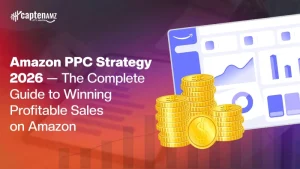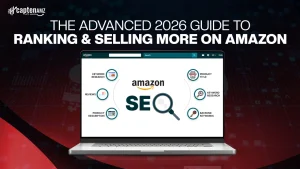If you’re actively selling on Amazon (or planning to), you already know one hard truth: the marketplace won’t wait for you.
Algorithms shift overnight. Customer behavior evolves constantly. What worked in 2023 is obsolete today. In 2025, the difference between a hobby seller and a 7-figure brand isn’t just hard work it’s the tech stack. Having the best Amazon tools in your arsenal isn’t optional; it’s the baseline for survival.
Whether you are a seasoned FBA veteran or just launching your first PL (Private Label) product, using the best Amazon tools 2025 can be the deciding factor between scaling your revenue or getting lost in page 3 obscurity.
These tools help you streamline mundane tasks, hyper-optimize listings, decode customer psychology, manage complex PPC campaigns, and track true net profit all while saving you countless hours of manual spreadsheet work.
So, if you’re serious about running a successful FBA brand, here is the definitive guide to the Top 10 Amazon tools that every seller you need in 2025.
Table of Contents
Toggle1. Listing Optimization Tools: The Conversion Engine
Your product listing is your digital storefront. It is the only salesperson you have working 24/7. It’s where browsers either become buyers or bounce to a competitor. That’s why robust Amazon listing optimization tools are non-negotiable.
In the past, optimization meant “keyword stuffing.” Today, it means “contextual relevance.” These platforms analyze your listings for:
- Keyword Density & Placement: Ensuring your main keywords are in the Title, Bullets, and Description without looking spammy.
- Image Quality & Compliance: Verifying that your main image meets Amazon’s strict white-background policies while maximizing zoom capability.
- A+ Content (EBC) Effectiveness: distinct layouts that drive engagement.
- Backend Search Terms: Flagging missing bytes in your backend keywords that are silently killing your visibility.
Modern optimization suites now use Generative AI to rewrite titles, bullet points, and descriptions. They don’t just write; they analyze the top 10 competitors and write copy that mathematically matches how shoppers are actually searching.
Pro Tip & Recommended Read: Great tools can’t fix bad strategy. Before you revamp your listings, check out our insightful guide on Fixing ACoS Issues Caused by Weak Creatives. It breaks down exactly how poor visuals and unclear copy can destroy your ad ROI, no matter how good your software is.
By blending human creativity with software-driven data, these tools ensure your product appears credible, clickable, and conversion-ready.
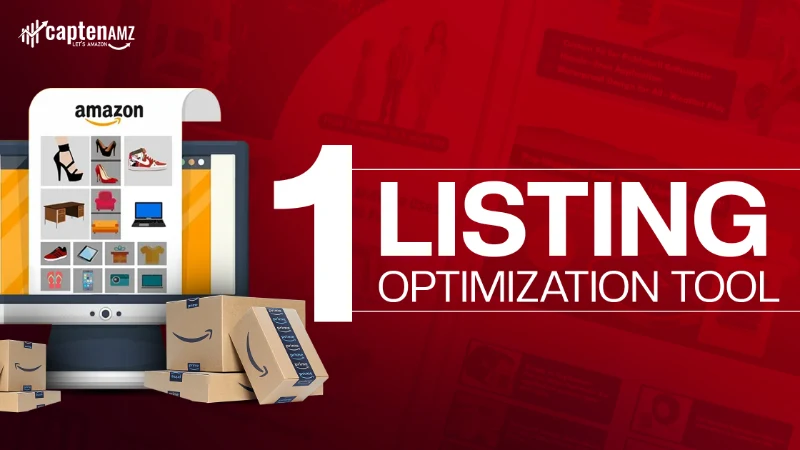
2. Product Research Tools: mitigate Risk Before You Launch
Ever sourced a product you thought would be a “home run,” only to see it sit in your FBA warehouse collecting dust and storage fees? You’re not alone.
That’s why Amazon product research tools are the backbone of any FBA business. They remove the guesswork by showing you what is in demand right now, based on data, not gut feeling.
These tools scan millions of ASINs to uncover:
- High-Volume, Low-Competition Keywords: The “Golden Ratio” of keywords.
- Seasonal Demand Spikes: Knowing if a product sells only in December or all year round.
- Market Saturation Trends: Identifying if a niche is dominated by one major brand (a red flag).
- Historical Price & Review Patterns: Seeing if the price has tanked in the last 6 months.
By combining this data, you can identify profitable niches before placing a bulk order. Some advanced tools even estimate monthly sales velocity and calculate potential profit margins for each ASIN before you spend a dime.
Critical Decision: Your fulfillment method affects your margins heavily. Before you launch, read our detailed comparison of FBA vs FBM Models. It will help you choose the right logistics structure before committing to inventory.
Remember: product research isn’t a one-time step; it’s a continuous process that guides your next launch or product line expansion.
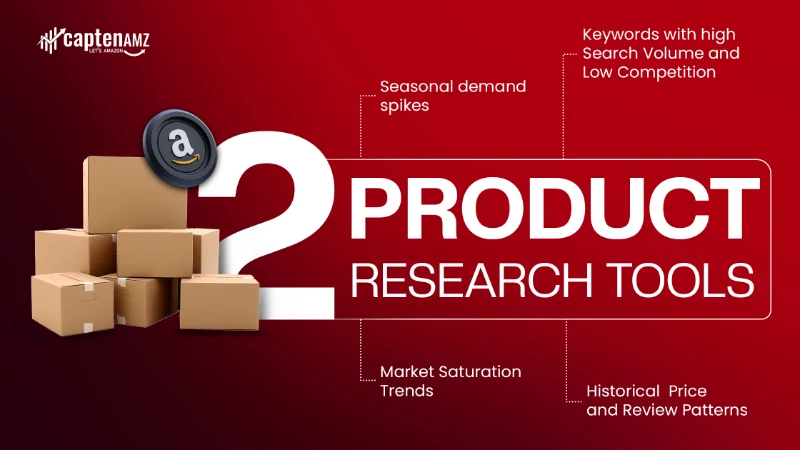
3. PPC & Advertising Management Tools: Automate to Scale
Advertising on Amazon is no longer optional; it’s the “pay-to-play” fee for visibility in a crowded space. However, manual management of hundreds of keywords is a recipe for burnout and wasted budget.
That’s where Amazon PPC management software comes in. These platforms automate bidding, analyze keyword performance, and uncover wasted ad spend before it drains your bank account.
The best PPC tools integrate directly with your Seller Central API to help you:
- Set “If/Then” Rules: If ACoS > 30%, lower bid by 10%. If ROAS > 4, raise bid by 20%.
- Dayparting: Automatically turn off ads during hours when your customers don’t buy (e.g., 3 AM).
- Placement Optimization: Adjust bids for “Top of Search” vs. “Product Pages.”
- Organic vs. Paid Tracking: See if your ads are actually helping your organic rank (TACoS).
Modern PPC tools even predict how different bid adjustments could affect total sales and profitability using machine learning.
Seasonal Strategy: If you’re running ads during peak seasons, you need a specific plan. Read this Q4 Performance Breakdown for Amazon Sellers to understand how shopper intent and timing should influence your PPC strategy in 2025.
With automated campaign control, you spend smarter, not harder.
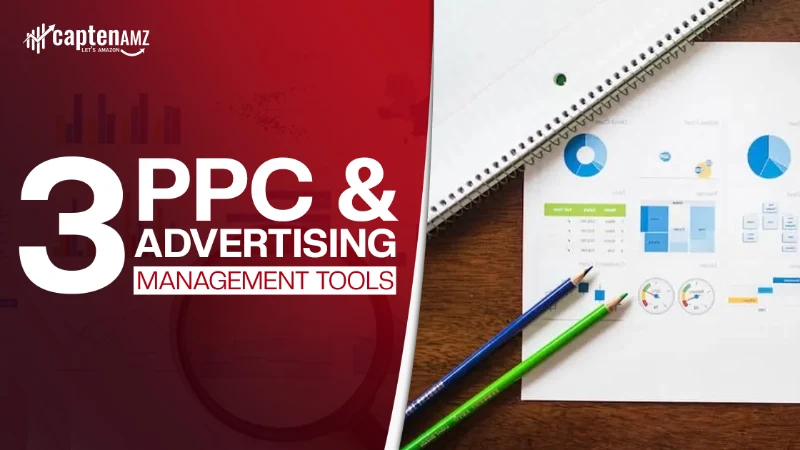
4. Keyword Research & Index Tracking Tools
If your listings don’t include the specific phrases buyers actually use, they’ll never find you. It is that simple.
Dedicated Amazon keyword research tools are designed to identify buyer-intent keywords, analyze your competitors’ coverage, and track how your ranking evolves over time.
Why “Indexing” Matters: Some tools flag “indexing drops.” This happens when Amazon’s algorithm quietly “de-lists” your product for a specific keyword. Without a tool, you would never know why your sales suddenly dropped. With a tool, you get an alert instantly.
These tools also help you uncover Long-Tail Keywords (e.g., “eco-friendly soy candle set for bathroom decor” vs. just “candle”). These long-tail terms bring cheaper, higher-intent traffic that converts better.
The 2025 “Rufus” Update: In 2025, Amazon’s AI-based search (Rufus) is placing even more emphasis on semantic relevance and context, not just raw keyword stuffing. You need smart data, not just a list of words. Embedding those insights properly into your title, bullet points, and backend is how you stay discoverable all year long.
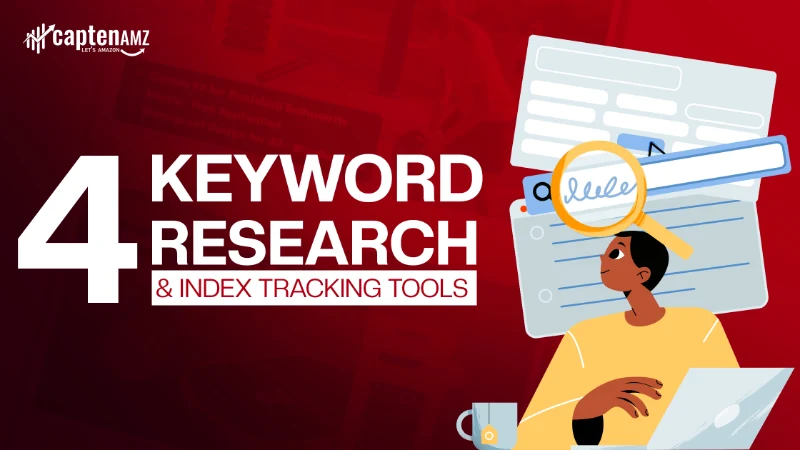
5. Competitor Analysis Tools: Spy Legally
On Amazon, your competitors are your best teachers if you know how to read them.
Competitor analysis tools for Amazon allow you to track everything from price changes and keyword shifts to review sentiment and ad placement. You’ll instantly know when a rival:
- Launches a new variation.
- Drops their price to undercut you.
- Starts ranking for a new keyword you missed.
The “Stockout” Strategy: Imagine being alerted the moment a top competitor’s inventory runs low. You can immediately increase your ad bids to capture their lost sales while they are out of stock. That’s the kind of tactical insight these tools provide.
Ranking Insight: For a deep dive into how to beat rivals, check out our research-based article on [How Amazon’s 2025 Ranking Algorithm Rewards Proactive Optimization]. It explains why watching your competition is key to winning visibility.
In short: study your competitors before they study you.
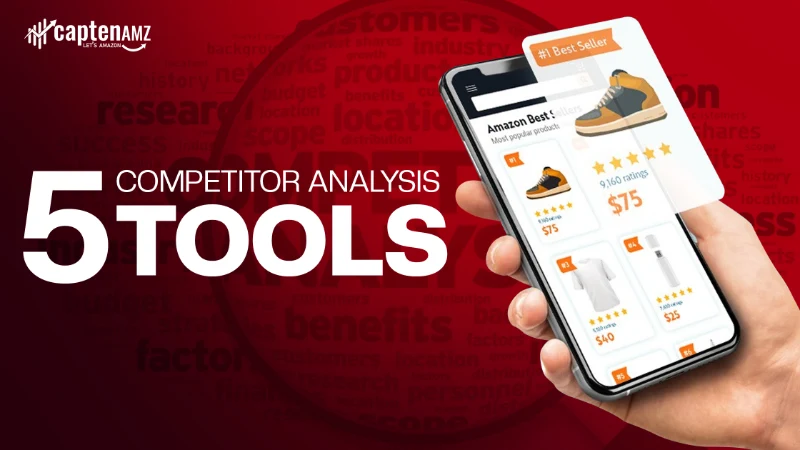
6. Inventory Management & Forecasting Tools
Few things hurt your brand more than running out of stock. Not only do you lose immediate revenue, but you also plummet in organic ranking. Regaining that ground can take weeks and thousands of dollars in PPC spend.
That’s why inventory management tools for Amazon sellers are crucial. They forecast demand using historical sales trends, current ad activity, and seasonal spikes. The best ones calculate exactly when to reorder based on your supplier’s lead time and Amazon’s restock limits.
Smart forecasting prevents:
- Over-stocking: Paying unnecessary storage fees and risking Long-Term Storage fees.
- Under-stocking: The “Ranking Killer.”
- Cash Flow Gaps: Ordering too early and tying up cash you don’t have.
Some tools connect directly with your suppliers or 3PLs to automate restock orders. Others visualize your IPI Score and alert you to stranded inventory before it becomes a compliance issue. For growing brands, inventory automation isn’t a luxury; it’s survival.
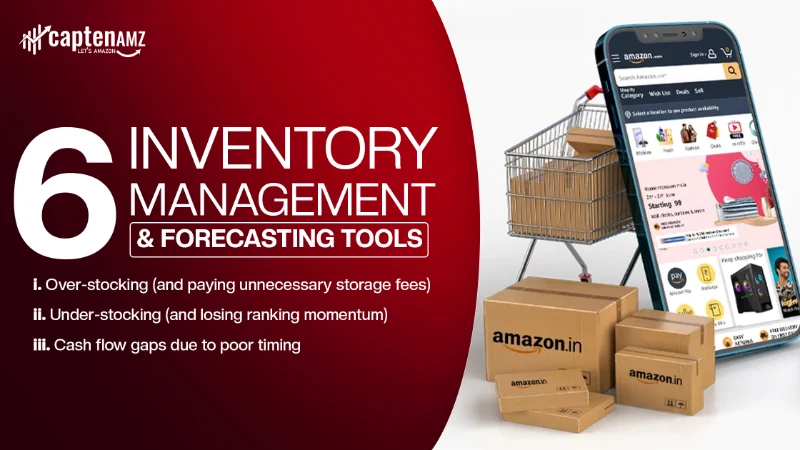
7. Profit & Margin Calculators: Know Your Numbers
Revenue is vanity; Profit is sanity.
Many sellers look at their “Sales” number on the Amazon App and think they are rich. Amazon profit calculator tools provide the reality check. They give a detailed breakdown of real costs, including:
- FBA Pick & Pack Fees
- Referral Fees
- Storage Fees
- PPC Spend
- Cost of Goods Sold (COGS)
- Return Costs & Refund Administration Fees
You can simulate pricing changes and instantly see how they affect your margin. For example, if you drop your price by $1 to match a competitor, does your net profit vanish?
This clarity keeps you from scaling unprofitable products and helps prioritize where to double down.

8. Repricing Tools: Win the Buy Box
The Buy Box (the “Add to Cart” button) is Amazon’s most valuable real estate. Over 80% of sales happen there. To win it, your price must be competitive but dropping prices blindly leads to a “race to the bottom.”
Automated repricing tools are the game-changer here. They continuously monitor competitor prices and adjust yours based on pre-set algorithmic rules.
Examples of Smart Repricing Rules:
- The Protector: Match the lowest FBA price only if your profit stays above 25%.
- The Predator: Reduce price slightly if you lose the Buy Box for over 24 hours.
- The Maximizer: Raise your price automatically when competitors sell out (Supply & Demand).
You can customize rules per SKU or region. The result? You win the Buy Box more often without staring at your screen all day.
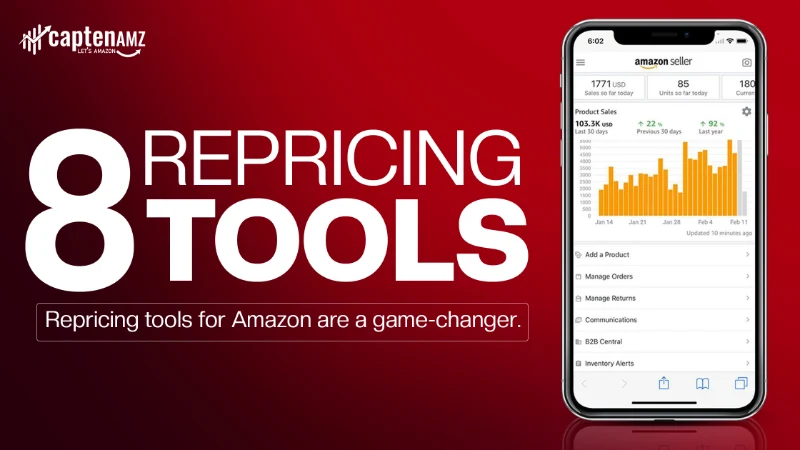
9. AI Automation Tools: The Efficiency Layer
In 2025, AI isn’t optional anymore; it’s embedded in the fabric of e-commerce. Amazon AI automation tools handle repetitive, data-heavy tasks so you can focus on high-level strategy.
Here’s what AI can do for you today:
- Copywriting: Write SEO-optimized titles, bullets, and A+ copy in seconds.
- Trend Prediction: Predict keyword shifts and search volume surges before they happen.
- Ad Optimization: Generate ad reports and recommend bid changes automatically.
- Risk Management: Detect suppressed listings or potential policy violations before Amazon flags them.
- Customer Service: Automate post-purchase messages to encourage seller feedback and reviews.
AI doesn’t replace human creativity, but it makes your execution 10x faster and your decisions smarter. Imagine uploading 10 optimized listings in one hour instead of a full day. That’s the power of automation.

10. Full FBA Management Dashboards
Once your brand expands across multiple products or marketplaces (US, Canada, UK, Germany), logging into different Seller Central accounts becomes a nightmare.
Amazon FBA business dashboards solve this. These all-in-one platforms bring together your ads, listings, inventory, profit, and reviews under one roof.
They help you:
- Track performance across international marketplaces.
- Compare ASIN profitability and ad efficiency side-by-side.
- Monitor customer feedback trends globally.
- View all KPIs in a single “Cockpit” snapshot.
Think of it as your mission control center everything you need to steer your brand confidently.

Bonus: Specialized Tools Worth Exploring
Beyond the top 10, these specialized micro-tools can give your business a competitive edge:
- Reimbursement Tools: Automatically file cases with Amazon for lost or damaged inventory (found money!).
- Competitor Review Mining: Extract feedback from rival products to find their weaknesses.
- Creative Analysis: Tools that measure Click-Through Rates (CTR) on your main image thumbnails before you go live (A/B testing).
- FBM Inventory Bots: Alert systems for hybrid sellers to manage merchant-fulfilled stock.
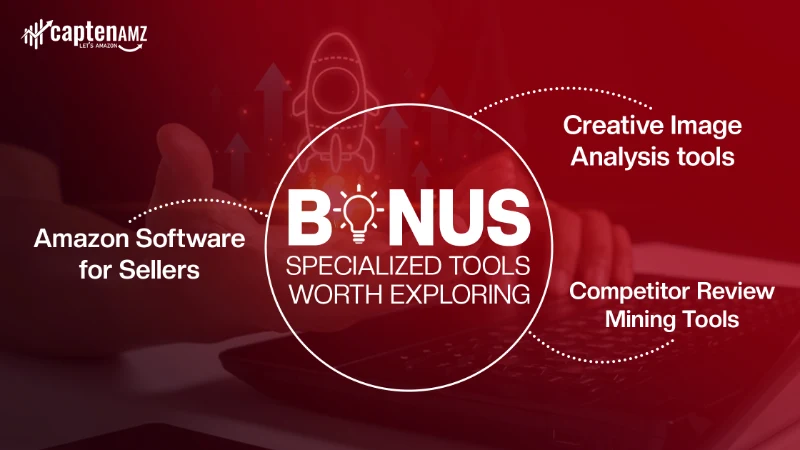
How to Choose the Right Tech Stack
With so many tools out there, it’s tempting to suffer from “Shiny Object Syndrome.” Here is a smarter approach:
- Identify Pain Points: Is your issue visibility? Get a PPC tool. Is it cash flow? Get a Profit Dashboard.
- Avoid Redundancy: Don’t buy two tools that do the same thing. Pick one strong performer per category.
- Test Before Committing: Utilize free trials to measure impact before paying annual fees.
- Prioritize ROI: Every tool must either save you time or make you money. If it does neither, cancel it.
Finale: Strategy Over Software
The marketplace is evolving fast. You can’t outwork Amazon, but you can outsmart it.
By leveraging these Amazon FBA tools, you set yourself up for scalability, efficiency, and long-term dominance. However, remember that a tool is only as good as the expert using it.
The sellers who win in 2025 will be the ones who integrate data with human creativity the ones who use automation but still think strategically.
Need help choosing the right stack or implementing these tools effectively? At CaptenAMZ, we don’t just recommend tools; we master them to grow your brand. From full PPC management to Listing Optimization, we handle the tech so you can handle the business. See us on LinkedIn & Instagram.
Book a FREE Amazon Tools Audit with CaptenAMZ – get a custom tool stack, optimization plan, and growth roadmap tailored to your brand and location.


